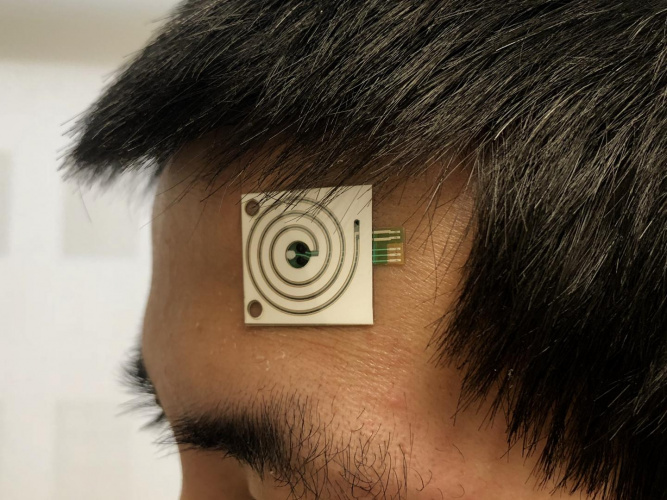Researchers at the University of California Berkeley developed the sensors as part of a wider study into what health markers can be determined by analysing the composition of sweat.
“I always say ‘decoding’ sweat composition,” said lead computer scientist Ali Javey, lead author on a paper describing the study in Science Advances. The sensors, which utilise microfluidic principles, monitor the rate of sweating and detect and measure the level of electrolytes and metabolites in the sweat.

The sensors contain a very fine spiralling tube, which wicks sweat away from the skin towards a series of sensors that detect potassium and sodium ions as well as compounds like glucose.
"Traditionally what people have done is they would collect sweat from the body for a certain amount of time and then analyse it," said graduate materials science and engineering student Hnin Yin Yin Nyein, another member of the team. “So you couldn't really see the dynamic changes very well with good resolution. Using these wearable devices we can now continuously collect data from different parts of the body, for example to understand how the local sweat loss can estimate whole-body fluid loss."
One goal of the project was to determine whether sweat sensors could replace blood tests to diagnose and monitor diabetes, but this turned out not to be possible.
"There's been a lot of hope that non-invasive sweat tests could replace blood-based measurements for diagnosing and monitoring diabetes, but we've shown that there isn't a simple, universal correlation between sweat and blood glucose levels," said researcher Mallika Bariya. This negative result is still useful, she insisted, as it will help future researchers concentrate on more fruitful studies.
The sensors were made by a simple roll-to-roll printing process similar to screen print, making them easy to produce and essentially disposable.
"Academic groups gain significant benefit from roll-to-roll technology when the number of test devices is not limiting the research,” commented Jussi Hiltunen of the VTT Technical Research Centre of Finland, a partner in the project. "Additionally, up-scaled fabrication demonstrates the potential to apply the sweat-sensing concept in practical applications."
The team believes that the best results using the technology come when several sensors are placed on different parts of the body. In testing, they placed sensors on sites including the forehead, underarms, forearm and lower back. One application might be to help people determine how hard they should push themselves while exercising without harming their health.




Nanogenerator consumes CO2 to generate electricity
Whoopee, they've solved how to keep a light on but not a lot else.